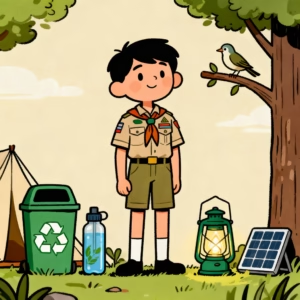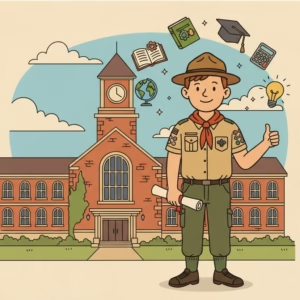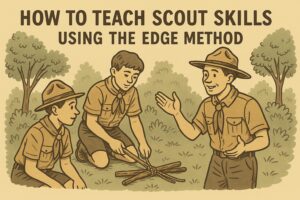Running a troop or patrol meeting can feel overwhelming—especially if it’s your first time in a leadership role like Senior Patrol Leader (SPL) or Patrol Leader. But with a little planning and a lot of enthusiasm, you can run a fun, organized, and effective Scout meeting that keeps everyone engaged. This guide will walk you through the steps to lead a successful meeting and provide tips for new youth leaders to grow in confidence.
Is It Hard to Lead a Scout Meeting?
Leading a Scout meeting isn’t hard if you come prepared. The hardest part is balancing fun with structure—keeping things on track without making it feel like school. Once you’ve led a few meetings, it becomes second nature. Don’t worry if things don’t go perfectly the first time—leadership is a skill, and just like camping or knot-tying, you get better with practice.
Tips for Success
- Plan ahead. Use a written agenda so everyone knows what to expect.
- Start on time and end on time. Respect everyone’s schedule.
- Involve others. Delegate parts of the meeting to your Assistant SPLs, Patrol Leaders, or younger Scouts.
- Keep it moving. If something isn’t working, move on to the next activity.
- Stay Scout-like. Lead with the Scout Oath and Law in mind—be courteous, kind, and cheerful.
Complete Guide: How to Lead a Scout Meeting
Note: Every troop runs a little differently. Check with your Scoutmaster or SPL for specific expectations.
1. Before the Meeting
- Create a written agenda. Include opening, announcements, main activities, and closing.
- Confirm materials. Will you need gear for a game, supplies for a merit badge activity, or a whiteboard?
- Coordinate with others. Talk with adult leaders and your fellow youth leaders to ensure everyone knows their roles.
2. Opening the Meeting
- Begin with Scout Oath, Law, and Outdoor Code.
- Make sure flags are set up if you’re doing a flag ceremony.
- Welcome Scouts and briefly explain the plan for the meeting.
3. Announcements and Patrol Check-Ins
- Go over any upcoming events or trips.
- Allow Patrol Leaders to check in with their patrols (attendance, uniform check, permission slips, etc.).
4. Main Activity (30–45 min)
This is the core of your meeting. Ideas include:
- Skill instruction (first aid, knots, fire-building)
- Merit badge work
- Troop-wide games or challenges
- Guest speakers or visiting merit badge counselors
Rotate activities each week to keep things fresh.
5. Game Time (Optional but Recommended)
Scouts love games—and they build teamwork! Choose a Scout-approved game that gets people moving and reinforces cooperation.
6. Closing the Meeting
- Allow time for final announcements or reminders.
- Reflect on how the meeting went—what went well and what could improve.
- End with a Scoutmaster’s Minute, vespers, or closing thought if your troop does one.
Common Mistakes to Avoid
- “Winging it.” Always have a plan—even a basic one.
- Too much talking, not enough doing. Keep activities hands-on and active.
- Trying to do everything yourself. Leadership means knowing how to delegate.
- Skipping reflection. Take 2 minutes after each meeting to think about what you’ll do better next time.
Resources for Scout Leaders
Conclusion
Being a youth leader in Scouts is one of the best ways to grow your confidence, communication, and leadership skills. Leading a troop or patrol meeting may seem intimidating at first, but with preparation and a positive attitude, you’ll do great. Remember: it’s okay to make mistakes—as long as you learn from them and keep doing your best. That’s what leadership is all about.





